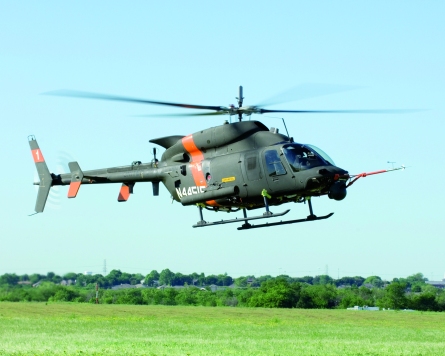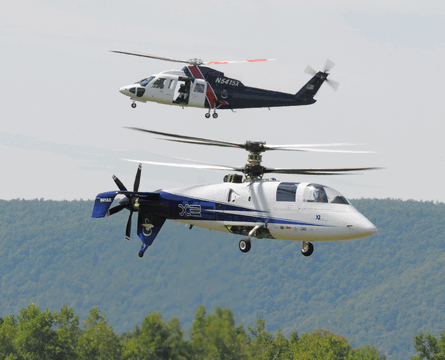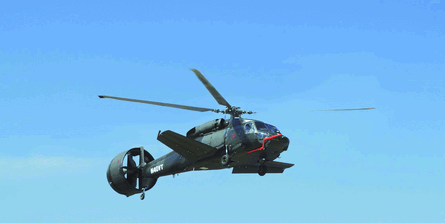Paul Bogosian has spent most of the past five years implementing a sweeping and mostly successful revitalisation of the US Army's aviation branch, propelled by funds divertedfrom the cancelled Boeing/Sikorsky RAH-66 Comanche light attack helicopter programme.
His nearly five-year tenure as programme executive officer for army aviation has achieved marked success, marred only by delays and cost overruns plaguing the Bell ARH-70 armed reconnaisance helicopter programme.
Modernisation programmes for attack, utility and cargo helicopters launched after the Comanche's demise in 2004 are progressing on track, even as swarms of new unmanned aircraft have entered the inventory and the first Alenia Aeronautica C-27J tactical transport is delivered to start replacing an ageing fixed-wing fleet.
 |
|---|
© US Army |
As Bogosian nears retirement in December, he is focused on addressing perhaps the military helicopter community's most glaring omission: an all-new aircraft. He is leading a strong, albeit belated, push to gain the conceptual support the army needs to launch an all-new helicopter development programme in about three years, while focusing industry's internal investments on the advanced technologies required to meet the army's objectives.
"There appears to be a coalescence of interests and a sense of necessity to address the technology investments necessary if we're going to have a next generation vertical manoeuvre capability in the future force, and that's finally been recognised," said Bogosian, speaking on the sidelines of the Association of the US Army convention last week.
Three separate studies have been launched or will be shortly be under way to establish the technology and investment roadmap necessary to deliver an all-new aircraft around 2025, Bogosian said.
A Joint Vertical Lift Task Force was established last month by the Office of Secretary of Defense (OSD), aiming to deliver a report within a year. The aviation branch of the army's training and doctrine command at Fort Rucker, Alabama is launching a similar capabilities-based assessment.
Meanwhile, Bogosian's office is teaming with the Defense Advanced Research Projects Agency and the Aviation and Missile Research Development and Engineering Center to focus on identifying candidate technologies.
LAUNCH DECISION
All three studies are timed to support a launch decision in fiscal year 2012 for the first all-new military helicopter in the US inventory since the ill-fated Comanche.
But the army's ambitious goals face challenges. Potential new-start programmes after 2010 are expected to come under heavy budget pressure if defence spending levels off or declines. Moreover, an all-new military aircraft is expected to need at least decades of development before becoming operational, suggesting any programme started in FY2012 would not be entering service until after 2030.
Bogosian acknowledges the army has made a slow start on all-new aircraft programme. "I would have hoped to have done it in [the FY2010 budget], but we simply didn't have enough maturity or enough engagement across the department to do it," he said at the convention. "The intent had been initially - and this was probably my mistake - I thought we could push it from the bottom up," he added. "But clearly something of this size has to be driven from the top, down, which is why I think it is wonderful that we're seeing OSD and this Joint Vertical Lift Task Force taking the initiative at that OSD level. That will compel much more engagement and much broader engagement than anything we could have initiated from the bottom up."
The army has set its sights on new aircraft technologies, with breakthrough advances for the helicopter's two enemies in physics - the fundamental trade-off between hover performance and the ability to fly faster than about 170kt (315km/h) and longer than a few hours using internal fuel tanks.
 |
|---|
© Sikorsky |
Such breakthroughs have eluded helicopter technology since the end of the Vietnam War era, even as other sectors of aviation heeded the lessons of that conflict, which involved the US military's first sustained battle against surface-to-air missiles.
"We still experience for the most part the same conditions that we experienced coming out of Vietnam," Bogosian says. "Now, we have more sophisticated platforms. [Current helicopters] have more power, they have more capability, but essentially they operate down in a dirty environment close to the fight and they haven't brought any great new technologies relative to speed and range.
INCREASED SURVIVABILITY
"Now, one of the things that [the fighter jet community] has done is, by investing in the ability to fly faster and higher, they have brought a level of survivability to the force that they didn't have during the Vietnam era. We have not made that same transition yet in rotary-wing aviation. I think that has been recognised by the OSD."
An all-new helicopter originally developed for military specifications has not entered the army fleet since the early 1980s when the earliest versions of the Sikorsky UH-60 Black Hawk and Boeing AH-64 Apache arrived. Early types of both fleets have already been replaced with remanufactured or all-new models, but even the oldest of those will be due for replacement or a service life extension after 2020.
Army plans loosely call for replacing those aircraft after 2025 with a common airframe called the Joint Multi-Role. Army aviators also hope to introduce the Joint Heavy Lift (JHL) concept, a helicopter capable of lifting Airbus Military A400M-sized loads, in the same timeframe.
The JHL is the army's recommended approach for the Joint Future Theater Lift (JFTL) requirement, for which the US Air Force is considering derivatives of the Boeing C-17 or Lockheed Martin C-130, an off-the-shelf aircraft such as the A400M, or an all-new fixed-wing airlifter with super-short take-off and landing capability. The JFTL is the army's last hope for moving forward on the JHL project, which continues to stand in as the basis for the army's next-generation rotorcraft breakthroughs. The JHL would require significant advances across the range of helicopter technologies, including materials, propulsion, drive train and survivability.
Technology candidates for the JHL include the Bell Boeing QuadTiltrotor, a Sikorsky heavylift helicopter concept and the Karem/Lockheed optimum speed tiltrotor.
"Should [JHL] become the solution for the Joint Future Theatre lift, then it will be our technology driver that I think will propel the next generation technology of vertical manoeuvre," Bogosian says.
"Now, if the JHL is not the solution for the Joint Future Theater Lift requirement then we will have to determine what platform focus we will have in the 2025 timeframe to drive the same technology questions. Will it be a singular replacement for joint utility/attack? Will it be some other kind of concept related to optionally piloted vehicles?"
High-speed rotorcraft technologies have included tiltrotors, canard rotor wings, disk rotors and stop-fold rotors. If developed into maturity, like the Bell Boeing V-22, each of those concepts promises high-speed flight up to about 300kt.
IMMATURE TECHNOLOGIES
"The speed requirement is driven by the operational ranges we expect the future force will need," Bogosian says. "Compound helicopter technology that will allow us to achieve those capabilities are immature at present. The only technology that we have fielded to date is the V-22 tiltrotor technology but are there other approaches that can take us to that end-state."
As a stopgap option, the army could also consider two programmes now in development - the Piasecki/Boeing X-49 SpeedHawk compound helicopter and the Sikorsky X2 coaxial helicopter. Both concepts are aiming to achieve a top speed of about 240kt.
 |
|---|
© Piasecki |
The point for the army is to make a decision on the selected platform that will drive the technology breakthroughs before the five-year spending plan starting in the FY2012 budget.
Bogosian is also aware that an all-new technology effort will be in competition for funding, not just with other emerging priorities. The army spends about $3 billion annually on aviation technology, and an all-new development effort could force the service to divert funding from current procurement programmes.
"The most difficult part is, in the midst of very substantial current investment, initiating the opportunity to consider future investment," he says. "That's always a challenge in a situation like this."
Source: Flight International























